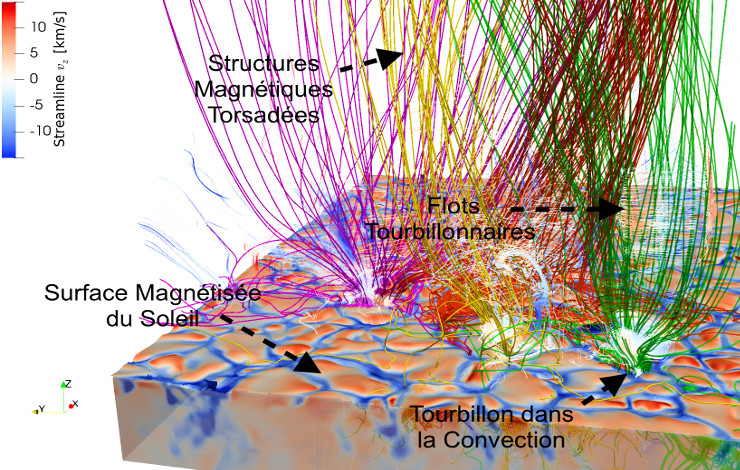Near the Sun's surface, with its turbulence, convection and intense magnetism, "magnetic switchbacks" can be observed. These form where open and closed magnetic field lines are found side by side, and are observed as reversals in the magnetic field orientation.
These sudden reversals of the magnetic field carried by the solar wind, called a switchback, have been measured since the start of the space-age. But NASA's Parker Solar Probe, launched in 2018 into the near-solar environment, has revived interest in this phenomena due to the unprecedented frequency in which they are observed (hundreds during a single orbit).
Recently, the ESA and NASA's Solar Orbiter probe (launched in 2020) provided the first-ever images of large-scale folds in the Sun's magnetic field. This suggests that switchbacks form close to the solar surface rather than within the solar wind, under the influence of turbulence.
In support of the Solar Orbiter program and as part of the ERC Synergy WholeSun project, researchers at the Irfu, together with an international collaboration, developed advanced computational simulations to study the formation of magnetic structures at the base of the solar wind, whose formation, heating and acceleration could be explained in large part by the creation and dissipation of switchbacks.
These magnetohydrodynamic simulations describe the nonlinear and complex interaction of convection cells at the surface of the Sun with the Sun's magnetic field. They reveal the generation of twisted magnetic structures, accompanied by vortical flows on a smaller scale. These torsion waves could ascend into the solar wind and dissipate there via turbulence to form switchbacks. The magnetic field twists have a characteristic length of about 10 thousand kilometers, consistent with the fragmented nature of the switchbacks observed by the Parker Solar Probe.
There are most likely several switchback formation mechanisms that can act simultaneously.
The Irfu researchers will continue this work by exploring the heating and structuring of the solar atmosphere in various magnetic configurations. The aim of this is to participate in interpreting the Parker Solar Probe and Solar Orbiter observations.
Starting in 2025, Solar Orbiter's orbit will begin to rise out of the plane of the planets, making it possible to observe the Sun's poles for the first time. Who knows what surprises await the scientists?

3D simulation of the magnetic field on a square with sides of 24 thousand km (the diameter of the Sun being about 1400 thousand km). The convective cells on the solar surface are colored in red and blue to distinguish the hot plasma (in red) which rises in the center of the granules from the cooling plasma (in blue). Under their influence, the solar magnetic field is organized in twisted structures. (c) Finley et al. (2022)